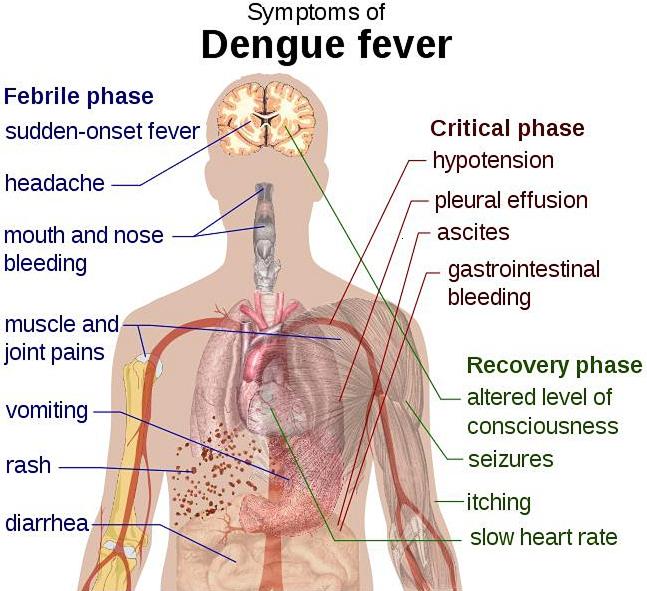Dengue fever history and symptoms
|
Dengue Fever Microchapters |
|
Diagnosis |
|---|
|
Treatment |
|
Case Studies |
|
Dengue fever history and symptoms On the Web |
|
American Roentgen Ray Society Images of Dengue fever history and symptoms |
|
Risk calculators and risk factors for Dengue fever history and symptoms |
Editor-In-Chief: C. Michael Gibson, M.S., M.D. [1]
Overview
Dengue fever presents with flu like symptoms fever, retro-orbital headache, fatigue, joint aches or arthralgias (joint aches), myalgias (muscle aches), nausea/vomiting, and lymphadenopathy (swollen lymph nodes).
Symptoms
This infectious disease is manifested by a sudden onset of fever, with severe headache, muscle and joint pains (myalgias and arthralgias - severe pain gives it the name break-bone fever or bonecrusher disease) and rashes; the dengue rash is characteristically bright red petechia and usually appears first on the lower limbs and the chest - in some patients, it spreads to cover most of the body. There may also be gastritis with some combination of associated abdominal pain, nausea, vomiting or diarrhea. Patients with Dengue fever may also have a case of swollen lymph nodes.
Some cases develop much milder symptoms which can, when no rash is present, be misdiagnosed as influenza or other viral infection. Thus travelers from tropical areas may inadvertently pass on dengue in their home countries, having not been properly diagnosed at the height of their illness. Patients with dengue can only pass on the infection through mosquitoes or blood products while they are still febrile.
The classic dengue fever lasts about six to seven days, with a smaller peak of fever at the trailing end of the fever (the so-called "biphasic pattern"). Clinically, the platelet count will drop until the patient's temperature is normal.
Cases of DHF also show higher fever, haemorrhagic phenomena, thrombocytopenia, and haemoconcentration. A small proportion of cases lead to dengue shock syndrome (DSS) which has a high mortality rate.
